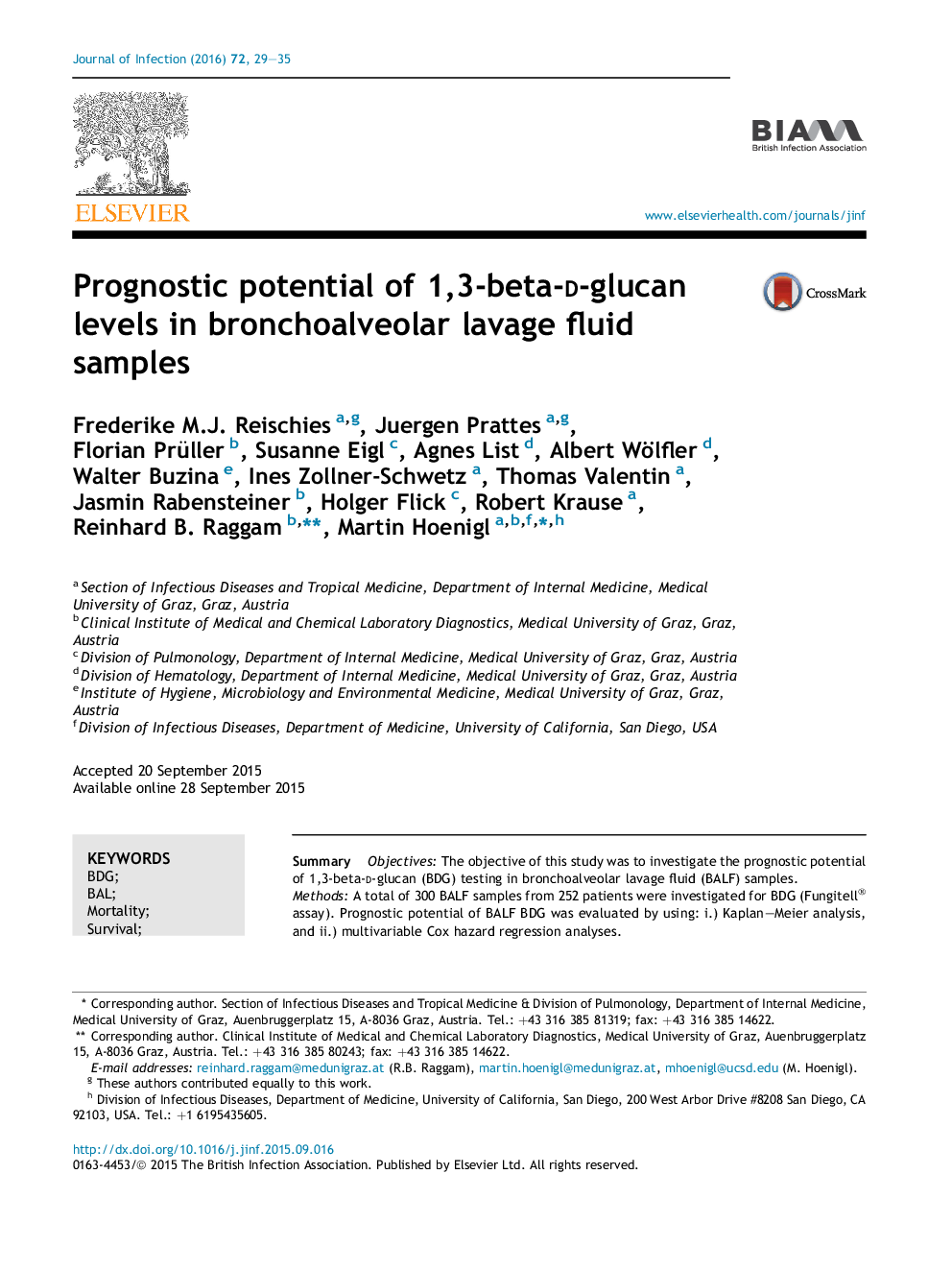| Article ID | Journal | Published Year | Pages | File Type |
|---|---|---|---|---|
| 3374376 | Journal of Infection | 2016 | 7 Pages |
SummaryObjectivesThe objective of this study was to investigate the prognostic potential of 1,3-beta-d-glucan (BDG) testing in bronchoalveolar lavage fluid (BALF) samples.MethodsA total of 300 BALF samples from 252 patients were investigated for BDG (Fungitell® assay). Prognostic potential of BALF BDG was evaluated by using: i.) Kaplan–Meier analysis, and ii.) multivariable Cox hazard regression analyses.ResultsBALF BDG levels were found to be significantly higher in samples with Candida spp. colonization (p < 0.001). A total of 61/252 patients (24.2%) died within 90-days of BALF sampling (18.1% of patients with BALF BDG <200 pg/mL, 32.4% with BALF BDG ≥200 pg/mL). Kaplan–Meier analysis revealed that overall cumulative 90-day mortality was significantly higher in those with BALF BDG levels ≥200 pg/mL when compared to those with levels <200 pg/mL (log-rank p = 0.006, Breslow p = 0.005 and Tarone–Ware p = 0.005). The multivariable Cox regression analysis showed that BALF BDG levels were a strong predictor of 90-day overall mortality, with a hazard ratio of 1.048 (per 100 pg/mL increase of BALF BDG).ConclusionFalse positive BALF BDG results in the presence of Candida spp. colonization of the lower respiratory tract may explain the limited diagnostic potential of BALF BDG testing. In contrast, prognostic potential of BALF BDG may be promising.
